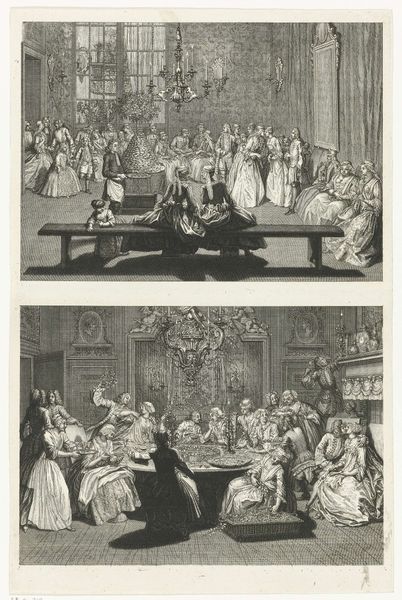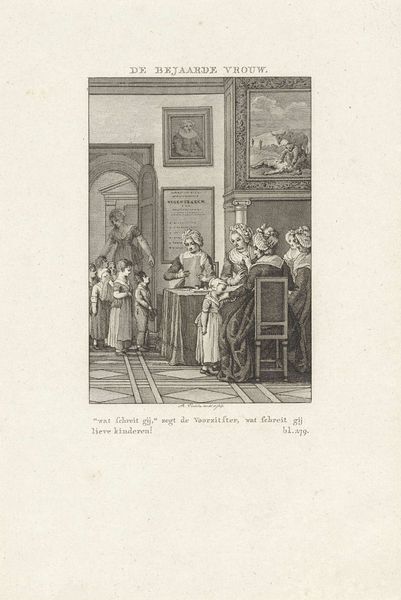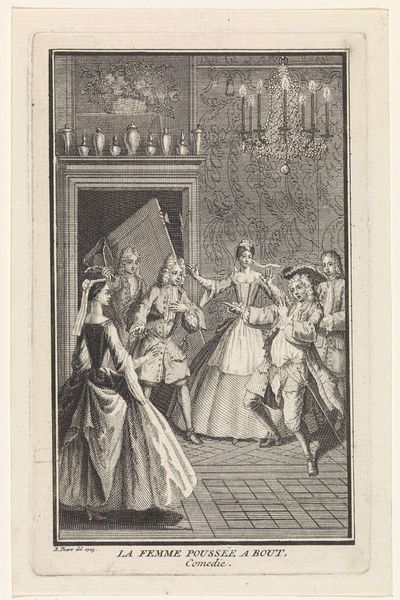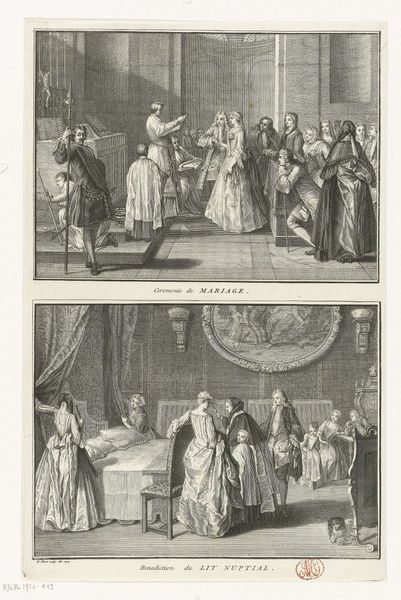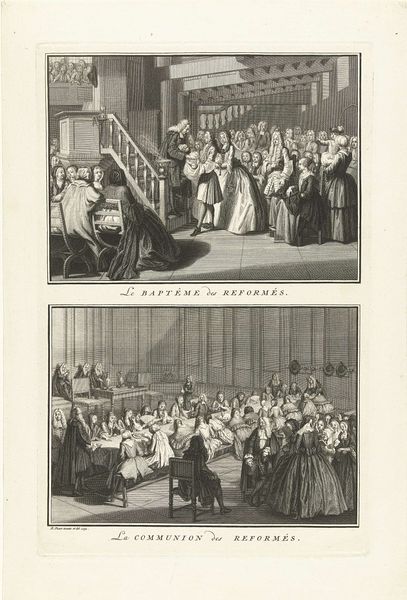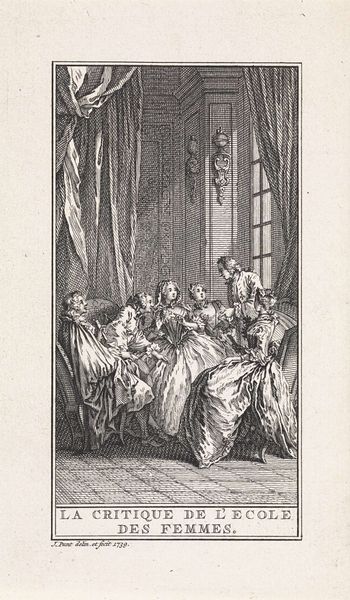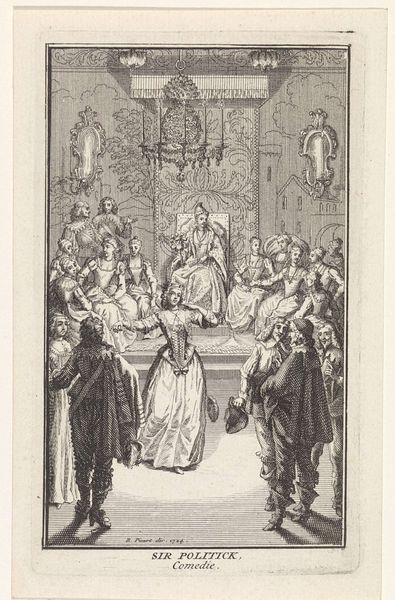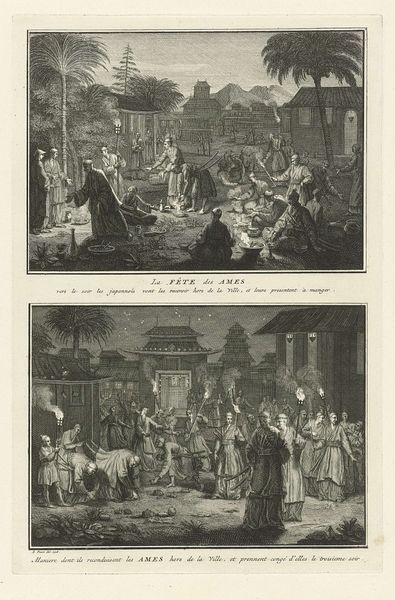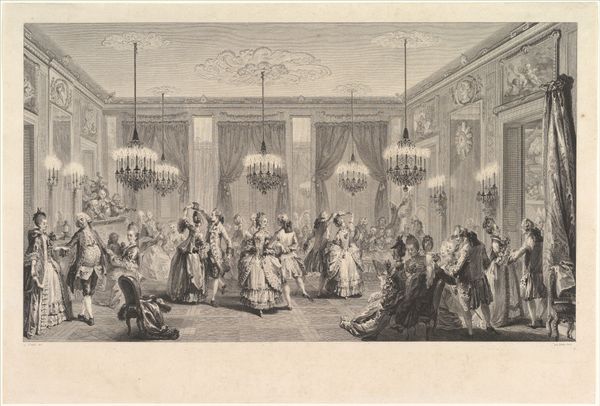
engraving
baroque
old engraving style
genre-painting
history-painting
engraving
Dimensions: height 325 mm, width 214 mm
Copyright: Rijks Museum: Open Domain
Curator: Looking at this print, titled "Verloving en Palmknopen" created around 1732 by Bernard Picart, I’m struck by the intricate detail he achieved through engraving. It seems to depict a formal gathering. Editor: It's rather dense, isn't it? A fascinating visual record of what seems like two different ceremonial settings. The light and shadow, though limited by the medium, really set a stage, almost theatrical. Curator: Exactly. "Verloving en Palmknopen," translating to "Betrothal and Palm Knots," portrays Dutch marriage customs. The top scene showcases the 'Verloving,' or betrothal ceremony. Note the couple seated on the bench as guests present gifts. The lower scene, the "Palmknopen," or Palm Knots, where wedding guests offer congratulations and likely tie knots in palm fronds as symbols of commitment. Editor: The "Palmknopen" scene is especially engaging. You can almost feel the excitement—or perhaps the tension—in the room through Picart’s renderings of body language. Look at how central the hand gestures are; what could they be indicating? And notice the contrast in spaces. High ceiling in the first scene vs lower ceiling and darker lighting of the second scene: What do you make of this deliberate construction? Curator: Those contrasts could reflect the different social dynamics, perhaps the transition from formal pronouncements to more intimate blessings. The use of engraving allowed for mass production of such imagery which makes you think: what are its functions beyond decoration? Perhaps to document and disseminate these marriage rituals for the burgeoning middle class? Editor: A valuable insight. We should remember engraving demands specialized skills and tools – copper plates, burins, and so on. The level of artistry isn't just representational but exists materially in the labor involved. Each line painstakingly etched. The consumption of this print itself becomes part of a wider economic network of artisanal craftmanship of the period. Curator: Precisely. Beyond its depiction of marriage customs, this engraving gives insight into the materials, labor, and distribution of art during the early 18th century, reflecting a period of social and economic change. It's more than just a historical snapshot; it’s an object deeply embedded in its own time. Editor: A compelling lens through which to understand both art and life during this era. Examining its symbolism in parallel with how it was made reveals just how multifaceted these artifacts really are.
Comments
No comments
Be the first to comment and join the conversation on the ultimate creative platform.
